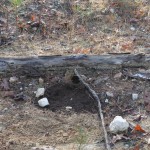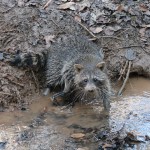In a recent conversation with my daughter about her homework, we were discussing the founding and settling of America. To her amazement, it was the fur trapper that led to the settling of America. European markets were thirsty for the bountiful fur America and Canada offered. Trapping is the oldest profession in America. While it’s hard to make a living trapping fur today due to lower demand and lower prices. As an outdoorsman, nothing will test your skill, and resolve like trapping fur-bearers Moreover, to control the populations of predators and nest predators, nothing works like trapping.
Like the old trapper said once; “That trap is patient – it doesn’t get cold, wet, sleepy or bored. When that critter comes by, it’s ready.” While trapping for many has a vast learning curve, there are things that can be done to help you catch coyotes and raccoons to help your deer and turkeys.
If you have never trapped, the fastest way to learn is to ask, beg or hire a trapper to show you how they do it. This will save years of learning – and help put fur on the ground. Most states allow for some type of foothold trap to capture these animals. We will focus only on the foot hold trap for this discussion. While there are many different kinds, we will keep it simple and stay with a standard dual spring size # 2 foothold. –
Once you have your traps and anchors, now it’s time to set for animals. For starters, a # 2 is a bit big for raccoon’s, however for the recreational trapper, it’s a good one size fits all for ‘coons and coyotes, fox and bobcats, opossums etc. Once you learn more, a #1 ½ is the better raccoon trap. Having said that here are the basics;

Raccoon's are a major threat to turkey nests. Removing them from your property will have an immediate impact on your turkey population
Raccoon’s: Raccoon’s love creeks, ponds and any other water source. A pocket set is a standard for raccoon’s. It’s a simple set – along the creek, place the trap on the edge of the water, beneath the water line. Directly above the trap
about twelve inches up on the bank, make a 3” hole, and throw some bait in the hole, when the raccoon smells the bait, it will start to work in the hole and step in your trap. As for bait, some simple ones are dry dog food, sardines, marshmallows, honey buns, etc. Anchor the trap with a six foot chain tied to a heavy log, stick or root. They will drag the log, and the long chain will get wrapped up quickly. This is the simplest method of catching raccoon’s.
Coyotes are a different animal all together (pun intended). The coyote is perhaps the most difficult of all animals we have to catch. But when you check your traps and find a coyote tugging on the chain, the thrill is right up there with seeing a huge buck or a strutting turkey. Without question of all the things to know in trapping – scent control is paramount, it’s a whole different level. While scent control is important for all hunters, when you are trying to get an animal to step in a five inch circle scent control is an entirely different lever all together.
When looking to see where to make your trap sets. The old saying for coyotes is true – set on sign. When you see tracks, scat or other sign, make a set right there. And where there is enough sign for one trap make two. Coyotes will often be caught in pairs. Common areas to look are along logging roads, field edges, logging decks, fence rows, hard edges, pond dams etc. Using a solid backing like a large log, big rocks, bones etc. make a hole beneath the object. Throw some stinging bait in the hole and set a trap about nine inches from the hole off set to one side by about four inches. Coyotes will approach the set at an angle and leave at an angle. Make sure it’s anchored well. An 18” piece of 3/8” rebar works great.

The Dirt Hole set for Coyotes is a great stand by: A solid backing such as this log is a must. This trap is along an old logging road
While there are a lot more sets to use for coyotes, the dirt hole is the most common and the most successful. Of the mistakes beginning trappers make is not setting the trap solid. I like to dig a shallow hole the size of the trap, set the trap in the hole and pack dirt all around it to make sure it is solid. Then using a sifter I will sift peat moss over the top. This dry dirt eliminates anything from clogging the jaws when it fires. It’s not uncommon for a trap to sit idle for several days before you catch a coyote. They cover large territories, and they may be in another area when you set your traps. Be patient, allow it to set and leave it alone.
There is a lot more to trapping than we are able to cover here. There are many benefits to using this technique on your property. It gives you another reason to be in the woods, is a great challenge, addictive, and will help control your predators like nothing else. I would say again, that the best method to learn how to trap is to tag along, or hire a trapper to trap your property and get them to teach you their methods.






